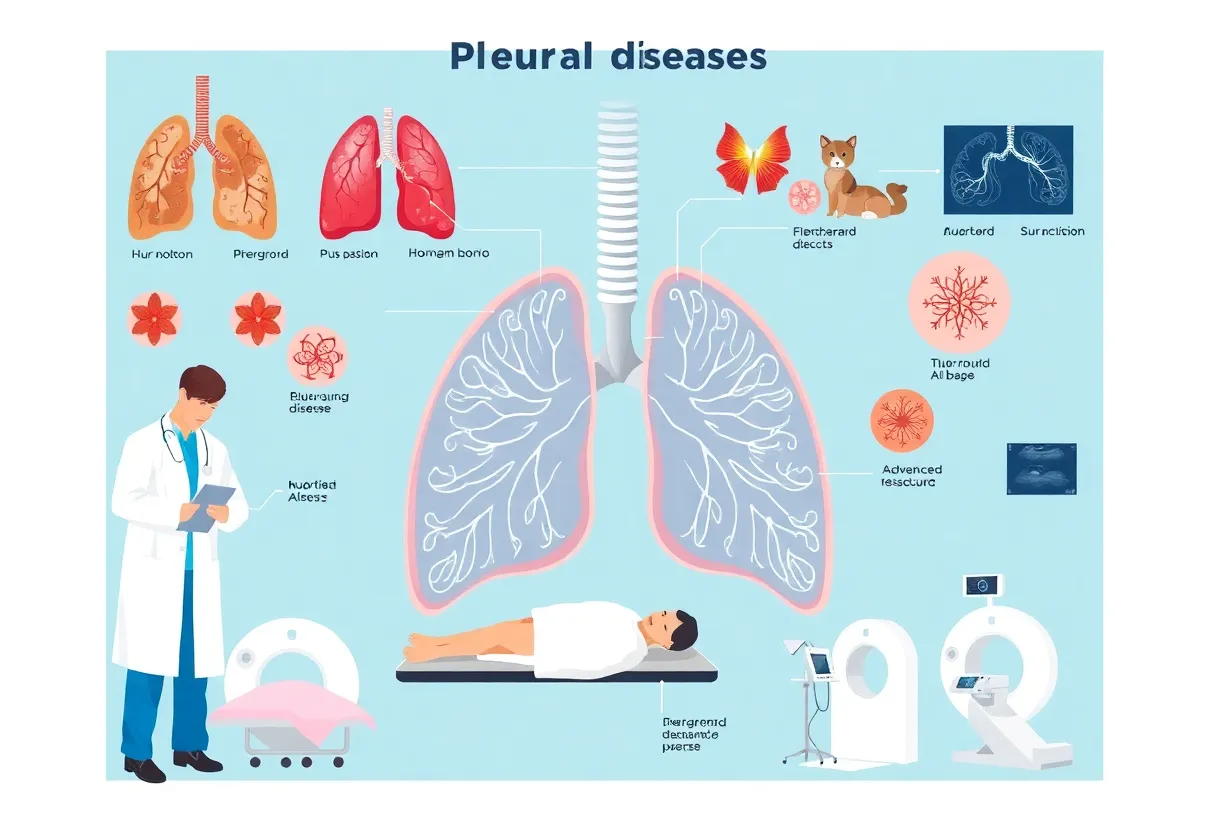News Summary
The Rising Tide of Pleural Diseases: An Alarmingly Growing Health Concern
Prevalence of Life-Threatening Conditions
The world is facing a disturbing surge in pleural diseases, with _mesothelioma_, a rare and aggressive cancer, among the front-runners of this alarming trend. Global health statistics indicate that pleural diseases, including lung cancer and tuberculosis, are on the rise, significantly contributing to market growth in the healthcare sector. In fact, an estimated _2.8 million new cases of lung cancer_ were reported in 2020 alone, according to the World Health Organization. This burgeoning number not only highlights the urgent need for effective healthcare interventions but also underscores the acute necessity for ongoing research and innovation in the field of pleural disease management.
The Shift Towards Minimally Invasive Techniques
As the prevalence of pleural diseases continues to escalate, healthcare providers are increasingly turning to _minimally invasive procedures_ that promise enhanced diagnostic accuracy and improved patient outcomes. One such advancement is the use of _thoracoscopy for pleural biopsy_, which allows for a more precise diagnosis and higher sample adequacy compared to traditional methodologies.
The proliferation of _image-guided procedures_—particularly ultrasound and CT-guided techniques—has become commonplace in medical practice. The real-time visualization and accuracy offered by these methods have led to a significant increase in their adoption among healthcare professionals. This shift is not merely a trend; it is indicative of the evolving landscape of pleural disease management.
A Booming Market with Promising Forecasts
The market dynamics surrounding pleural diseases paint a picture of substantial growth. In 2023, the market is valued at approximately _US$ 5.01 billion_, projected to reach _US$ 8.13 billion_ by 2030, with an anticipated compound annual growth rate (CAGR) of _7.2%_ from 2023 to 2030. The segmentation reveals that malignant diseases are gaining traction, yet non-malignant conditions continue to hold a significant portion of the market, particularly with their projected CAGR standing robust at _6.8%_.
Among the various diagnostic tools made available for pleural disease diagnosis, imaging tests—including CT scans, ultrasounds, MRI, and PET scans—dominated the market in 2019 and are expected to lead the growth in the coming years.
Regional Insights and Demographic Drivers
A geographical analysis provides a deeper understanding of trends that are shaping this sector. _North America_ emerges as a dominant player, propelled by an increasing geriatric population and significant enhancements in healthcare infrastructure and research initiatives. However, challenges remain, including limited awareness and delayed diagnosis which continue to hinder growth in some regions.
Innovative Developments Highlighted
The landscape of pleural disease treatment is being enriched by remarkable innovations. The recent FDA approval for a _PD-1 inhibitor_ targeted at malignant pleural mesothelioma marks a significant step forward. Another groundbreaking development includes the _ACES™ Automatic Continuous Effusion Shunt System_. This fully implantable device demonstrates a promise of enhancing pleural effusion management without the hassle of external drainage systems.
Challenges Ahead: Awareness and Expertise Gaps
Despite the promising developments, the sector grapples with challenges including the limited availability of expertise and resources. Delayed diagnosis stemming from a lack of awareness presents a substantial barrier to progress in managing pleural diseases.
In Conclusion: A Call to Action
The rising prevalence of pleural diseases, particularly _mesothelioma_, calls for urgent attention from healthcare authorities, researchers, and policymakers alike. Embracing innovative solutions, raising awareness, and improving access to diagnostic and treatment options will be central to tackling this growing health crisis. The market’s future appears bright, but only if these challenges can be effectively navigated.
With the investment in research and the adoption of advanced diagnostic methods, the healthcare industry can hope to turn the tide against pleural diseases and provide patients with the best possible outcomes.
Deeper Dive: News & Info About This Topic
HERE Resources
Uncontrolled Wildfires in Southern California Trigger Mandatory Evacuations and Health Alerts
Revolutionizing Mesothelioma Treatment: The Rise of Opdivo
Connecticut Jury Awards $15 Million for Asbestos Case
Major Wildfires Ravaging Los Angeles: A Hidden Asbestos Threat Emerges
2024: A Pivotal Year for Mesothelioma Treatment Advances
FDA Unveils Proposed Rule to Combat Asbestos in Talc Products
Alarming Rise of Mesothelioma Cases in Louisiana: Navy Veterans at High Risk
Risks of Asbestos Exposure: Protecting Yourself
New Strategic Partnership to Enhance Oncology Treatments
Landmark Case Awards $2.6 Million to Asbestos Victim’s Widow



















